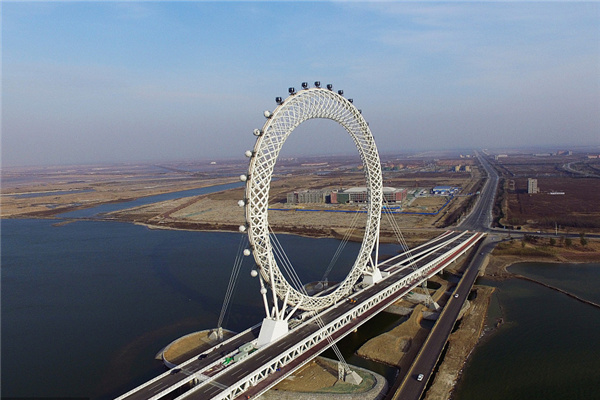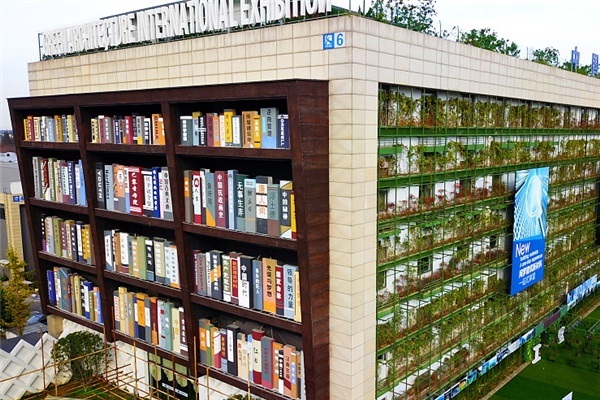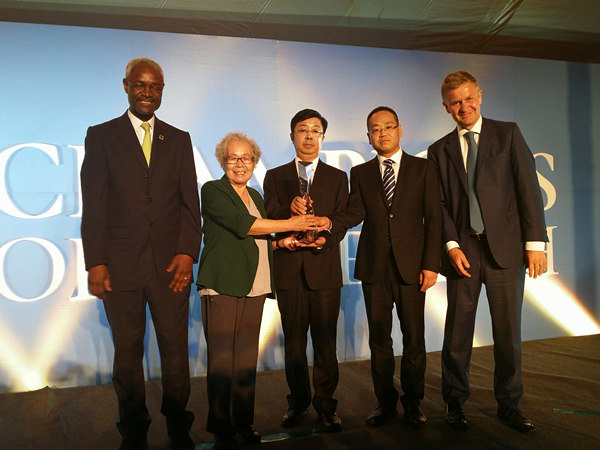

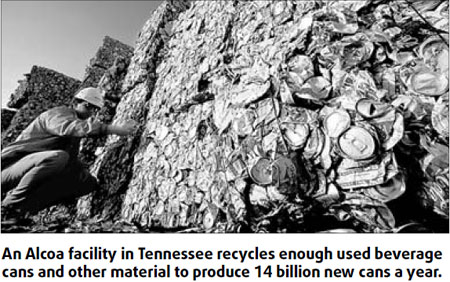
Alcoa is one of the largest and most fully integrated aluminum companies in the world, which means that it has the capabilities to extract raw materials, process them into aluminum, convert the metal into end-use products or make them available to others for further processing, and recycle aluminum products at the end of their useful life.
Alcoa mines bauxite, lignite, coal and other minerals, then converts bauxite to aluminum oxide and then to aluminum through processes that use fuels, caustic soda, lime, petroleum coke, coal tar pitch, aluminum fluoride, other chemicals and water.
The aluminum giant also uses fuels and hydroelectric facilities to produce electrical energy, which is a major component of the electrolytic process required to produce aluminum metal from aluminum oxide.
The basic process requires approximately four tons of bauxite to produce two tons of aluminum oxide, which, in combination with one-half ton of carbon, can produce one ton of aluminum metal. Once produced, the metal can be used for a wide variety of products. Because it does not rust, decay, or lose its quality, it can be recycled repeatedly without loss of properties.
Alcoa is aware of the importance of materials flow throughout the economies of the world, and recognizes the need to make efficient use of all raw materials and natural assets.
To that end, Alcoa has developed a materials flow analysis, in conjunction with the International Aluminum Institute, to better understand the global flow of aluminum production, aluminum flows and inventories in customer and consumer products, and recycling loops.
Data entered into the model suggests that three-fourths of all the aluminum ever produced is still in productive use in transport, packaging and building applications.
In 2007, Alcoa continued discussions and engaged in material flow analysis with external stakeholders, including the International Aluminum Institute, European Commission-Joint Research Centre, the International Energy Agency (Energy Efficiency Division) and researchers at Yale and Tsinghua universities.
Waste materials used
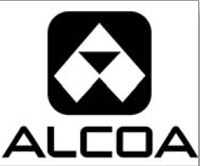
Alcoa's primary approach to waste management is to reduce waste generation where possible. If waste generation is not preventable, it attempts to reuse the waste or make it practical for others to use. Similarly, it explores opportunities to use waste materials as raw materials in its processes where technically and economically feasible.
In the last few years, Alcoa has been a leader in finding ways to transform spent pot lining (SPL) - the carbon and refractory lining of aluminum smelting pots that have reached the end of their service life - into a raw material for other industries.
Alcoa worked with cement manufacturers to develop an environmentally safe process that destroys the spent pot lining's cyanide content, reduces the leachable fluoride to acceptable levels, and absorbs other contaminants into the cement material.
An added bonus is that the carbon contained in the spent pot lining creates heat during the cement-making process, lowering the amount of energy needed for manufacturing and offering a significant cost and environmental benefit.
In 2006, Alcoa led a taskforce that developed a global voluntary objective, adopted by the board of the International Aluminum Institute, to ultimately convert all generated SPL as feedstock for other industries or to reuse and process all SPL in its facilities.
Alcoa also uses what is essentially a waste product from the petroleum refining industry - petroleum coke - as a raw material to form the anodes that are essential for electrolytic process. It also purchases coal tar pitch, a by-product of the steel industry, as the binder for anodes.
Alcoa continues to evaluate alternative uses for bauxite residue from its refining operations, and it is advancing the Alcoa-developed process of neutralizing this material with carbon dioxide. This award-winning process, developed in Australia, has the double benefit of improving the characteristics of the residue for re-use while sequestering a greenhouse gas.
Recycling
Aluminum is one of the few materials used in consumer products that can be economically recycled without local, regional, or national subsidies. Aluminum is a "manufactured resource" because once the aluminum is separated from the oxide in the bauxite, it can be used over and over again by current and future generations.
The current "standing inventory" of this manufactured resource is about 583 million metric tons of aluminum in use and available for future recycling. This represents about 73 percent of all the aluminum that has ever been produced.
Alcoa operates one of the largest used beverage can (UBC) recycling facilities in the world at its plant near Knoxville, Tennessee in the US, and it currently is upgrading this facility to increase its recycling capacity by 50 percent. The expansion will utilize state-of-the-art environmental and fuel efficiency technologies, and it will support future flexibility to process other aluminum scrap types. This investment furthers Alcoa's position as a leader in aluminum scrap processing technology.
In early 2008, Alcoa announced an aggressive goal to raise the UBC recycling rate in North America from its current 52 percent rate to 75 percent by 2015. Alcoa outlined a number of possible approaches to help increase the recycling rate, including behavior changes, making recycling and collection more convenient, technical improvements for improving the processing of coated materials, and improved commercial alliances across all in the industry.
Alcoa believes that the aluminum industry must work together for common sustainability goals that transcend individual commercial objectives, and it must approach this with a sense of urgency.
By raising the recycling rate to 75 percent, the industry can save the electricity equivalent of two average-size coal-fired power plants and avoid more than 11 million metric tons of carbon dioxide emissions a year.
Recycled metal from products like used beverage cans, end-of-life vehicles, demolished buildings, and discarded consumer products continues to be an important source for Alcoa's basic material, and its importance will keep growing.
(China Daily 01/19/2009 page5)


